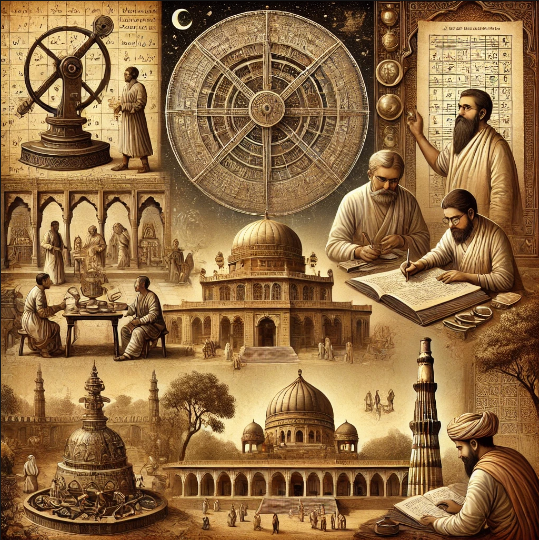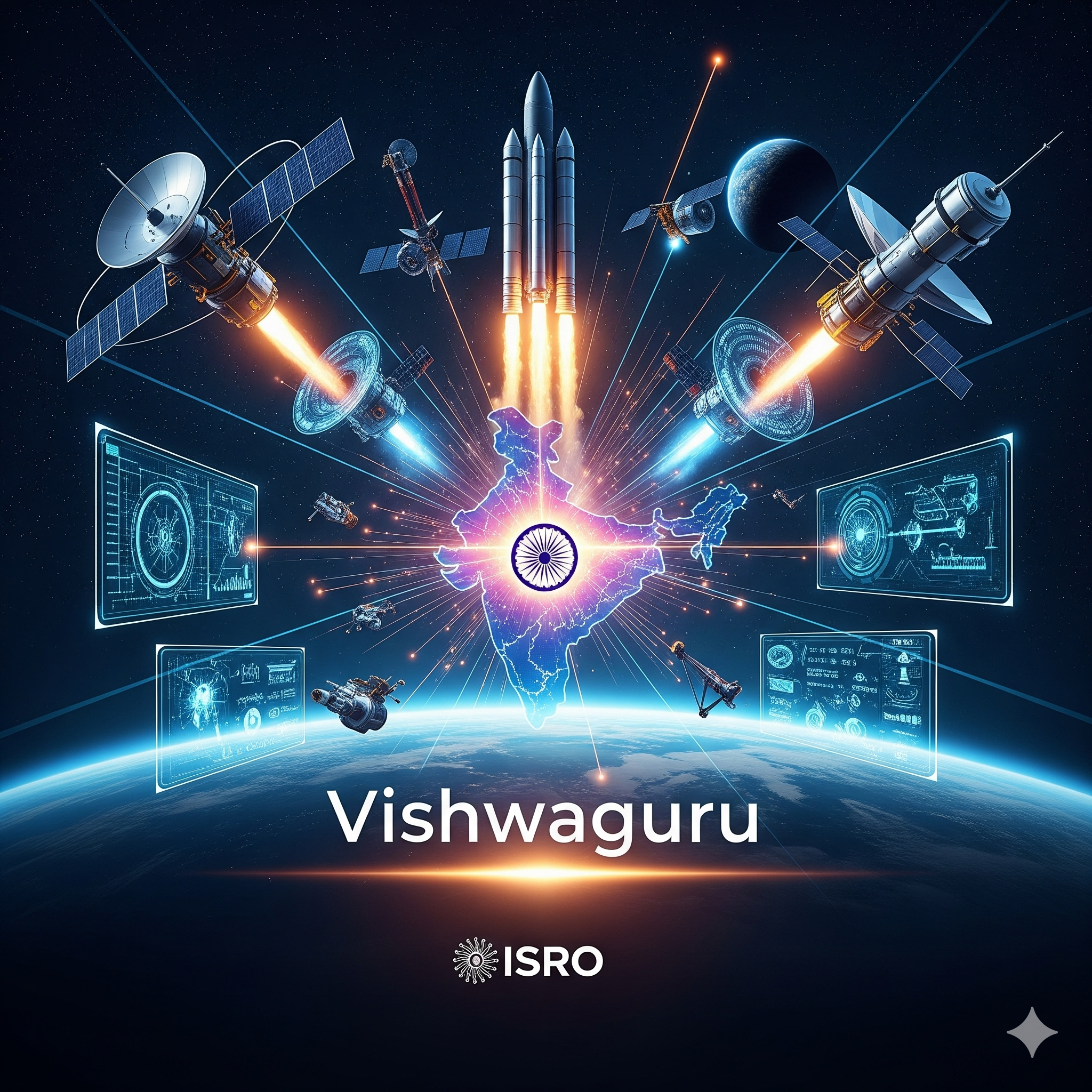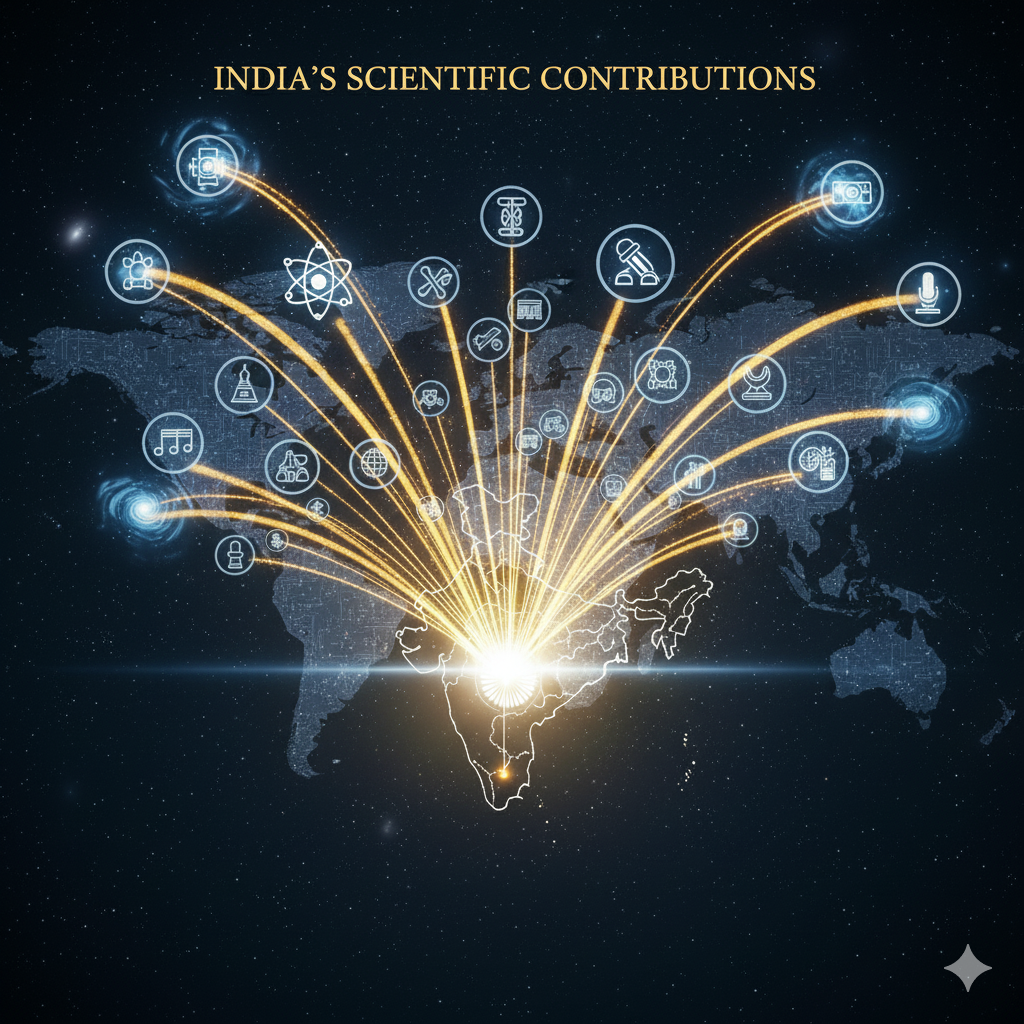Introduction
The Gupta period (circa 4th to 6th century CE) is often regarded as the “Golden Age” of India due to remarkable advancements in various fields, including science and technology. This era witnessed a significant growth in mathematics, astronomy, medicine, metallurgy, and engineering, which laid the foundation for many modern scientific principles. The Gupta rulers patronized scholars and encouraged intellectual pursuits, leading to groundbreaking contributions in multiple disciplines. This article explores the key developments in science and technology during the Gupta period and their impact on later advancements.
1. Development in Mathematics
One of the most significant contributions of the Gupta period was in the field of mathematics. The period saw the emergence of great mathematicians like Aryabhata and Brahmagupta, whose works influenced not just Indian but also global mathematical thought.
1.1 Aryabhata’s Contributions
Aryabhata, a renowned mathematician and astronomer, made notable contributions in algebra, trigonometry, and arithmetic. His work Aryabhatiya introduced several key concepts:
- Decimal system: The Gupta mathematicians refined the decimal numeral system, which later spread to the world through Arab scholars.
- Concept of Zero: Though earlier notions of zero existed, Gupta mathematicians formalized its use in mathematical operations.
- Pi Approximation: Aryabhata calculated the value of Pi (π) with remarkable accuracy.
- Trigonometry Advancements: He introduced sine and cosine functions, which formed the basis for later developments in trigonometry.
1.2 Brahmagupta’s Contributions
Brahmagupta further expanded on Aryabhata’s work and provided systematic rules for mathematical operations. His contributions include:
- Rules for Positive and Negative Numbers: Brahmagupta developed fundamental rules for arithmetic operations involving zero and negative numbers.
- Solution of Quadratic Equations: He introduced solutions to quadratic equations and provided the first systematic approach to solving them.
2. Astronomy and Space Science
The Gupta period witnessed significant advancements in astronomy, closely linked to mathematical progress. Indian astronomers of this era developed highly accurate astronomical models and calculations.
2.1 Aryabhata’s Astronomical Discoveries
- Heliocentric Model: Aryabhata proposed that the Earth rotates on its axis, challenging the geocentric view prevalent at the time.
- Eclipses Explanation: He correctly explained the causes of solar and lunar eclipses, attributing them to shadows rather than supernatural phenomena.
- Planetary Motion: His calculations on the motion of planets and their orbits were highly accurate and influenced later astronomical research.
2.2 Varahamihira’s Contributions
Another major astronomer, Varahamihira, made significant contributions to Indian astronomy and astrology:
- Panchasiddhantika: His treatise compiled and refined earlier astronomical theories.
- Predicting Weather and Natural Phenomena: He introduced methods to predict monsoon patterns based on astronomical observations.
3. Medicine and Healthcare
The Gupta period saw remarkable progress in medical sciences, particularly in Ayurveda. Prominent scholars like Sushruta and Charaka contributed extensively to the development of medical knowledge.
3.1 Sushruta and Surgery
Sushruta, known as the “Father of Surgery,” wrote the Sushruta Samhita, detailing numerous surgical procedures.
- Plastic Surgery and Rhinoplasty: He pioneered techniques for reconstructive surgery, including nose surgery (rhinoplasty), which are still used in modified forms today.
- Surgical Instruments: Sushruta designed numerous surgical tools, including scalpels and forceps, many of which resemble modern instruments.
- Cataract Surgery: The techniques described by Sushruta for eye surgeries were advanced for their time.
3.2 Charaka and Ayurveda
Charaka, another eminent physician, compiled the Charaka Samhita, which focused on internal medicine.
- Concept of Digestion and Metabolism: He provided insights into bodily functions and emphasized the importance of diet and lifestyle.
- Herbal Medicine: Charaka documented the properties of various medicinal herbs and their therapeutic uses.
- Preventive Healthcare: His works emphasized disease prevention through hygiene and wellness practices.
4. Metallurgy and Engineering
Metallurgy was another area where the Gupta period made significant advancements. Indian metalworkers developed sophisticated techniques for refining and alloying metals.
4.1 Iron and Steel Production
- Iron Pillar of Delhi: This 7-meter-high iron pillar, built during the Gupta period, is renowned for its rust-resistant composition. It demonstrates the high level of metallurgical expertise achieved at the time.
- Advanced Smelting Techniques: Gupta metallurgists developed efficient methods for extracting and refining metals, leading to high-quality steel production.
4.2 Architecture and Civil Engineering
- Temple Construction: The period saw the development of Nagara-style temple architecture, which became the basis for later Indian temple designs.
- Urban Planning: Cities were designed with efficient drainage systems, wells, and roads, reflecting advanced engineering knowledge.
5. Innovations in Textile and Agriculture
Gupta-era innovations extended to textiles and agriculture, contributing to economic prosperity.
5.1 Textile Advancements
- Silk and Cotton Weaving: The Gupta period witnessed advancements in textile production, with India becoming a major exporter of fine cotton and silk fabrics.
- Dyeing Techniques: The use of natural dyes for fabric coloring was perfected, enhancing the quality of Indian textiles.
5.2 Agricultural Innovations
- Irrigation Systems: Improved irrigation techniques, including canal construction and step wells, boosted agricultural productivity.
- Crop Rotation and Soil Management: Farmers adopted better farming techniques, leading to higher yields and food security.
6. Literature and Scientific Documentation
Scientific knowledge during the Gupta period was preserved and transmitted through Sanskrit texts, which played a crucial role in educational advancements.
6.1 Sanskrit Scientific Texts
- Aryabhatiya and Brahmasphutasiddhanta: Key mathematical and astronomical texts that influenced later scholars in India and beyond.
- Sushruta Samhita and Charaka Samhita: Medical texts that became foundational references for Ayurvedic medicine.
- Panchasiddhantika: A compilation of earlier astronomical theories, refining scientific knowledge.
6.2 Nalanda University
- Center of Learning: Nalanda University became a hub for scientific education, attracting scholars from across the world.
- Subjects Taught: Mathematics, astronomy, medicine, and engineering were part of the curriculum, showcasing the integration of science into education.
Conclusion
The Gupta period was a transformative era in Indian history, marking significant progress in science and technology. Contributions in mathematics, astronomy, medicine, metallurgy, and engineering not only advanced Indian civilization but also influenced global scientific thought. Many discoveries from this period formed the foundation for later innovations in various scientific fields. The legacy of Gupta-era scholars continues to be recognized in modern times, proving that their intellectual pursuits were far ahead of their time. Through their advancements, the Gupta period cemented its place as one of the greatest epochs of scientific progress in Indian history.




